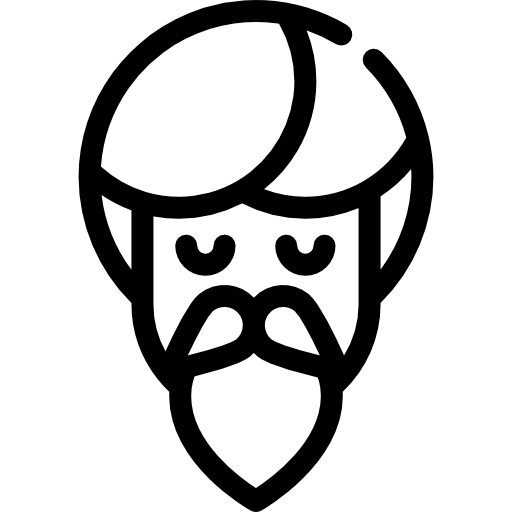
YOGASVARUPE
Introduction
on Tantra
For ages, we are trying to understand what tantra is and we often don’t understand it. Everyone explains it in a different way as they relate and understand which becomes more chaos in our head.
We are neglecting the essence of tantra and its philosophy and only taking what is attractive.
The reason being for not able to understand is because we don’t have the tools and guidance. We try to define something which cannot be defined. It is something that brings us out from the construction of ideas, thoughts, morals, values, cultures, and a lot more. We are neglecting the essence of tantra and its philosophy and only taking what is attractive. This is dangerous, it can lead to suffering and ignorance about the truth and can be often deluded in life. You might have seen many around you who wants to take this path but often ending up in misery. This is true because there is no right guidance and schools to practice and not the proper way to learn.
Another factor which has created a huge misunderstanding about it is from the western world who completely misinterpreted the scriptural texts wrongly and took what they seem is exciting. In the west people needed to come out from their religion because of their excessive oppression of belief in Christianity and its concepts, which made people go and while traveling they came across this science of tantra where there is complete freedom from the society and one can enjoy the worldly pleasure and use them as tools for higher awakening of the conscious.
Practitioners in lower tantra utilize forbidden substances, such as meat, liquor, dried grains, fish, and sexual practice, during ritual to offer to shakti as the creative force and the supreme force. But this is only a tamasic part of tantra a lower practice, which is seen as vama (left hand path). Simply taking this as truth as the practice will often create disturbances in mind because they are again just tools, one cannot be attached with tools, one has to let go of every aspect in order to attain supreme truth. Which was neglected by the western world. Which creates chaos in our lifestyle, with society, family, culture, religion, and other aspects.

Let me give you an insight into the introduction on tantra. What it is and how we can use it for our spiritual development.
What is tantra
Tatha brahmande, yatha pindande (“As in the macrocosm, so in the microcosm”)
Tantra means liberation of energy and expansion of consciousness from its gross form. It is a method to expand the mind and liberate the dormant potential energy, and its principles form the basis of all yogic practices. Hence, the Hindu Tantra scriptures refer to techniques for achieving a result.
According to Hindu tantrism, the entire universe is considered to be the divine stage where Shiva and Shakti carry on the drama of life. Tantra deals with ritual and spiritual practices to attain the grace of that Shakti, with the aim at achieving liberation from the darkness of ignorance, thus also attaining immortality.
Tantra also means a “loom” or “weaving,” which is related to the fact that it teaches that the Universe is a web in which everything is interrelated and interconnected.
According to Hindu tantrism, the entire universe is considered to be the divine stage where Shiva and Shakti carry on the drama of life. Tantra deals with ritual and spiritual practices to attain the grace of that Shakti, with the aim at achieving liberation from the darkness of ignorance, thus also attaining immortality.
Tantra also means a “loom” or “weaving,” which is related to the fact that it teaches that the Universe is a web in which everything is interrelated and interconnected.
Although the word Tantra has many meanings, each with its own particular nuance depending on the context, its most significant definition remains: it is an instrument to expand the level of consciousness.
In one sentence, the philosophical and practical system of Tantra can be summed up as: “Nothing exists that isn’t divine.” This is the quintessence of Tantric philosophy. All the features of Tantra have their roots in this vision.
In Tantra, the universe is alive, not illusory. It represents the manifestation of joyous, free Divine Consciousness in a variety of forms. All manifestation is simply the interplay of Shiva and Shakti, the masculine and feminine. Thus, we can say that Tantra is a world-affirming and body-affirming spiritual tradition. A practical consequence of this view was that householders could aspire to spiritual liberation (moksha), which was not the case in Classical Yoga, where renunciation of worldly life was considered absolutely necessary for moksha.
In one sentence, the philosophical and practical system of Tantra can be summed up as: “Nothing exists that isn’t divine.” This is the quintessence of Tantric philosophy. All the features of Tantra have their roots in this vision.
In Tantra, the universe is alive, not illusory. It represents the manifestation of joyous, free Divine Consciousness in a variety of forms. All manifestation is simply the interplay of Shiva and Shakti, the masculine and feminine. Thus, we can say that Tantra is a world-affirming and body-affirming spiritual tradition. A practical consequence of this view was that householders could aspire to spiritual liberation (moksha), which was not the case in Classical Yoga, where renunciation of worldly life was considered absolutely necessary for moksha.
In Tantra, the body is seen as a living temple and sexual energy is seen as divine energy. The body, with all its energies, is considered a divine instrument for spiritual transformation. We can say that the broad approach of Tantra consists of making all ordinary activities sacred.
Tantra is a practical system. That’s why it’s called a sadhana shastra, which means it is a practice-oriented scripture. It is not an instant philosophical system. It is based on the direct experiences and realizations of Tantric sages and it consists of numerous methods to suit different types of followers.
Tantra is a practical system. That’s why it’s called a sadhana shastra, which means it is a practice-oriented scripture. It is not an instant philosophical system. It is based on the direct experiences and realizations of Tantric sages and it consists of numerous methods to suit different types of followers.
Tantra is deeply devotional and highly ritualistic. It was designed to help us reach the goal of moksha. Tantric rituals are the means to train in the Tantric vision—to see and experience all of life and its energies as divine manifestations. To embody the quintessence of Tantra, “Nothing exists that isn’t divine,” doesn’t mean to intellectually understand it, but to live it. This equates to Self-realization.
Thus, it is a non-dogmatic system that adapts to the needs of the time. It is a dynamic system that has changed and developed for the benefit of its adepts.
Thus, it is a non-dogmatic system that adapts to the needs of the time. It is a dynamic system that has changed and developed for the benefit of its adepts.
What Tantra actually means
Tantra is quite an abstract religion, as in it does not have a clear definition.
The word "tantra" is derived from the combination of two words "tattva" and "mantra".
"Tattva" means the science of cosmic principles, while "mantra" refers to the science of mystic sound and vibrations.
Tantra, therefore, is the application of cosmic sciences with a view to attain spiritual ascendancy. In another sense, tantra also means the scripture by which the light of knowledge is spread:
Tanyate vistaryate jnanam anemna iti tantram.
Here word tantra is made up by the joining (sandhi in Sanskrit) of two Sanskrit words: tanoti (expansion) and rayati (liberation).
Tantra is quite an abstract religion, as in it does not have a clear definition. Also, different seekers define the tradition in different ways, many of which are not even consistent with each other. Tantra, though, is clearly recognized as being very different from the ancient Hindu Vedic tradition.
"Tattva" means the science of cosmic principles, while "mantra" refers to the science of mystic sound and vibrations.
Tantra, therefore, is the application of cosmic sciences with a view to attain spiritual ascendancy. In another sense, tantra also means the scripture by which the light of knowledge is spread:
Tanyate vistaryate jnanam anemna iti tantram.
Here word tantra is made up by the joining (sandhi in Sanskrit) of two Sanskrit words: tanoti (expansion) and rayati (liberation).
Tantra is quite an abstract religion, as in it does not have a clear definition. Also, different seekers define the tradition in different ways, many of which are not even consistent with each other. Tantra, though, is clearly recognized as being very different from the ancient Hindu Vedic tradition.
Before trying to delve into tantrism, it is important to understand that this is not a single coherent system. It is rather a tradition that gradually evolved from an accumulation of practices and rituals, in order to attain the grace of the divine.
The practitioner of tantra uses his own prana or divine energy in order to harness it to the universal prana, thereby attaining his goal. The goal in question could be either spiritual, material or both.
Tantra has its roots in mysticism and hence, some practitioners consider it very necessary to experience mystical phenomena during the course of their practice. Many practitioners also consider that aspirants should have the guidance of a guru or a spiritual master before entering the tantric realm.
The practitioner of tantra uses his own prana or divine energy in order to harness it to the universal prana, thereby attaining his goal. The goal in question could be either spiritual, material or both.
Tantra has its roots in mysticism and hence, some practitioners consider it very necessary to experience mystical phenomena during the course of their practice. Many practitioners also consider that aspirants should have the guidance of a guru or a spiritual master before entering the tantric realm.
Definition of Tantra
Philosophical definitions of Tantra
Tantra is an ancient spiritual system and tradition which includes philosophy and practical instructions or techniques practice to heighten human awareness and for engendering worldly and spiritual prosperity.
Tantra is about exploring and identifying the hidden part in human personality—the feminine qualities in men and masculine qualities in women, like Shiva-Shakti it helps to maintain the balance: helps humans to grow in spirituality and cosmic connection.
Tantra is about exploring and identifying the hidden part in human personality—the feminine qualities in men and masculine qualities in women, like Shiva-Shakti it helps to maintain the balance: helps humans to grow in spirituality and cosmic connection.
Tantra is made up of two words: ‘Tanoti’ and ‘Trayati’. Tanoti means "to weave, to expand, to stretch, to extend", while the word Trayati means "to liberate or free". Therefore, Tantra (tan+tra) means to expand one's experience and awareness of everything, to extend the frontiers of apprehension beyond the material, and hence to attain spiritual knowledge and liberation. The world Tantric is an adjective that describes something coming from Tantra.
Tantra has a few more meanings - a sense of governance, rule, or control. A sense of supporting or maintaining [as a family], and it also means happiness.
Tantra has a few more meanings - a sense of governance, rule, or control. A sense of supporting or maintaining [as a family], and it also means happiness.
Realistic definitions of Tantra
Tantra is a philosophy and practice, includes physical, mental, and spiritual practices along with its philosophy to expand the experience and awareness to accomplish spiritual knowledge and freedom.
Tantra is the Science of energy management and experience. It provides tools and techniques for real experience (Pratyaksha Shastra), spiritual experience (Sadhana Shastra), and worship (Upasana Shastra).
Tantra is the Science of energy management and experience. It provides tools and techniques for real experience (Pratyaksha Shastra), spiritual experience (Sadhana Shastra), and worship (Upasana Shastra).
Tantric Traditions
The ancient name of the Tantric system is called Agama. Agamas have three major sub-systems/traditions - Vaishnava, Shaiva, and Shakta. In Vaishnava tradition, Vishnu is the supreme Godhead, in Shaiva tradition- Shiva is the supreme Godhead. Technically, the word 'Tantra' applies to 'Shakta' literature and teachings in which Divine Mother (Shakti) reveals the knowledge and is considered the supreme Godhead. However, the word Tantra and Agama are now used interchangeably and accepted as Agama/Tantra. In Agama/Tantra tradition, knowledge may be derived from one or more sub-systems, e.g., Hatha Yoga comes from Shaiva tradition, and Kundalini Yoga/Laya Yoga comes from Shakta tradition.
Theology of Tantra

Shaktism
Shakta’s worship the Supreme as the Divine Mother, Shakti or Devi. She has many forms. Some are gentle, some are fierce. Shakta’s use chants, real magic, holy diagrams, yoga, and rituals to call forth cosmic forces and awaken the great kundalini power within the spine.
The spiritual practices in Shaktism are similar to those in Saivism, though there is more emphasis in Shaktism on God's Power as opposed to Being, on mantras and yantras, and on embracing apparent opposites: male-female, absolute-relative, pleasure-pain, cause-effect, mind-body. Certain sects within Shaktism undertake "left-hand " tantric rites, consciously using the world of form to transmute and eventually transcend that world. The "left-hand " approach is somewhat occult in nature; it is considered a path for the few, not the many. The "right-hand " path is more conservative in nature.
The spiritual practices in Shaktism are similar to those in Saivism, though there is more emphasis in Shaktism on God's Power as opposed to Being, on mantras and yantras, and on embracing apparent opposites: male-female, absolute-relative, pleasure-pain, cause-effect, mind-body. Certain sects within Shaktism undertake "left-hand " tantric rites, consciously using the world of form to transmute and eventually transcend that world. The "left-hand " approach is somewhat occult in nature; it is considered a path for the few, not the many. The "right-hand " path is more conservative in nature.
· Nature of God: Personal Goddess and temple Deity is Shri Devi or Shakti, female, worshiped as Rajarajeshvari, Parvati, Lakshmi, Sarasvati, Kali, Amman, etc. the Divine Mother. The Goddess Shakti is both compassionate and terrifying, pleasing and wrathful, assuaged by sacrifice and submission.
· Nature of shakti: Shakti is an active, immanent Being, separate from a quiescent and remote Siva.
· Avatar: The Divine Mother does incarnate in this world.
· On the Soul and God: The Divine Mother, Shakti, is mediatrix, bestowing Advaita moksha on those who worship Her.
· Spiritual Practice: Emphasis is on bhakti and tantra, sometimes occult, practices. Ascetic-occult.
· Scriptures: Vedas, Shakta Agamas (Tantras) and Puranas.
· Nature of shakti: Shakti is an active, immanent Being, separate from a quiescent and remote Siva.
· Avatar: The Divine Mother does incarnate in this world.
· On the Soul and God: The Divine Mother, Shakti, is mediatrix, bestowing Advaita moksha on those who worship Her.
· Spiritual Practice: Emphasis is on bhakti and tantra, sometimes occult, practices. Ascetic-occult.
· Scriptures: Vedas, Shakta Agamas (Tantras) and Puranas.
Saivism
Saivite Hindus worship the Supreme God as Siva, the Compassionate One. Saivites esteem self-discipline and philosophy and follow a Satguru. They worship in the temple and practice yoga, striving to be one with Siva within.
The path for Saivites is divided into four progressive stages of belief and practice called charya, kriya, yoga and jnana. The soul evolves through karma and reincarnation from the instinctive-intellectual sphere into virtuous and moral living, then into temple worship and devotion, followed by internalized worship, or yoga, and its meditative disciplines. Union with God Siva comes through the grace of the Satguru and culminates in the soul's maturity in the state of jnana, or wisdom. Saivism values both bhakti and yoga, devotional and contemplative sadhanas, or disciplines.
The path for Saivites is divided into four progressive stages of belief and practice called charya, kriya, yoga and jnana. The soul evolves through karma and reincarnation from the instinctive-intellectual sphere into virtuous and moral living, then into temple worship and devotion, followed by internalized worship, or yoga, and its meditative disciplines. Union with God Siva comes through the grace of the Satguru and culminates in the soul's maturity in the state of jnana, or wisdom. Saivism values both bhakti and yoga, devotional and contemplative sadhanas, or disciplines.
· Nature of God: Personal God and temple Deity is Siva, neither male nor female. Lords Ganesh and Karthikeya are also worshiped.
· Nature of shakti: Shakti is God Siva's inseparable power and manifest will, energy, or mind. God Siva is pure love and compassion, immanent and transcendent, pleased by our purity and sadhana.
· Avatar: There are no divine earthly incarnations of the Supreme Being.
· On the Soul and God: The Divine Mother, Shakti, is mediatrix, bestowing Advaita moksha on those who worship Her.
· Spiritual Practice: With bhakti as a base, emphasis is placed on sadhana, tapas (austerity), and yoga. Ascetic.
· Scriptures: Vedas, Saiva Agamas and Saiva Puranas.
· Nature of shakti: Shakti is God Siva's inseparable power and manifest will, energy, or mind. God Siva is pure love and compassion, immanent and transcendent, pleased by our purity and sadhana.
· Avatar: There are no divine earthly incarnations of the Supreme Being.
· On the Soul and God: The Divine Mother, Shakti, is mediatrix, bestowing Advaita moksha on those who worship Her.
· Spiritual Practice: With bhakti as a base, emphasis is placed on sadhana, tapas (austerity), and yoga. Ascetic.
· Scriptures: Vedas, Saiva Agamas and Saiva Puranas.
Vaishnavism
Vaishnavites worship the Supreme as Lord Vishnu and His incarnations, especially Krishna and Rama. Vaishnavites are mainly dualistic. They are deeply devotional. Their religion is rich in saints, temples, and scriptures.
Most Vaishnavites believe that religion is the performance of bhakti sadhanas, devotional disciplines, and that man can communicate with and receive the grace of the Gods and Goddesses through the darshan (sight) of their icons. The paths of karma yoga and jnana yoga lead to bhakti yoga. Among the foremost practices of Vaishnavites is chanting the holy names of the Avatar’s, Vishnu's incarnations, especially Rama and Krishna. Through total self-surrender, prapatti, to Vishnu, to Krishna or to His beloved consort Radharani, liberation from samsara (the cycle of reincarnation) is attained.
Most Vaishnavites believe that religion is the performance of bhakti sadhanas, devotional disciplines, and that man can communicate with and receive the grace of the Gods and Goddesses through the darshan (sight) of their icons. The paths of karma yoga and jnana yoga lead to bhakti yoga. Among the foremost practices of Vaishnavites is chanting the holy names of the Avatar’s, Vishnu's incarnations, especially Rama and Krishna. Through total self-surrender, prapatti, to Vishnu, to Krishna or to His beloved consort Radharani, liberation from samsara (the cycle of reincarnation) is attained.
· Nature of God: Personal God and temple Deity is Vishnu, male. His incarnations as Rama and Krishna are also worshiped, as well as His divine consort, Radharani. God Vishnu is loving and beautiful, the object of man's devotion, pleased by our service and surrender.
· Nature of shakti: No special importance is given to Shakti. However, there are parallels wherein the divine consorts are conceived as the inseparable powers of Vishnu and His incarnations: e.g., Krishna's Radharani and Rama's Sita.
· Avatar: Vishnu has ten or more incarnations.
· On the Soul and God: God and soul are eternally distinct. Through Lord Vishnu's grace, the soul's destiny is to worship and enjoy God.
· Spiritual Practice: Emphasis is on supreme bhakti or surrender, called prapatti. Generally devotional and non-ascetic.
· Scriptures: Vedas, Vaishnava Agamas, Puranas, and the Ithasa (Ramayana and Mahabharata, especially the Bhagavad Gita).
· Nature of shakti: No special importance is given to Shakti. However, there are parallels wherein the divine consorts are conceived as the inseparable powers of Vishnu and His incarnations: e.g., Krishna's Radharani and Rama's Sita.
· Avatar: Vishnu has ten or more incarnations.
· On the Soul and God: God and soul are eternally distinct. Through Lord Vishnu's grace, the soul's destiny is to worship and enjoy God.
· Spiritual Practice: Emphasis is on supreme bhakti or surrender, called prapatti. Generally devotional and non-ascetic.
· Scriptures: Vedas, Vaishnava Agamas, Puranas, and the Ithasa (Ramayana and Mahabharata, especially the Bhagavad Gita).
How to approach
· There is only one approach to Tantra -- the Rational approach.
· Tantra is highly rational in its approach; it asks for no faith in advance.
· It is a self-verifying science of the development of natural energies into their supernatural terms leading to a cosmic enjoyment of life in spiritual consciousness.
· Tantra embraces everything, it does not deny anything.
· It utilizes everything available to us in this world to raise and expand human consciousness and to accelerate the process for the desired goal.
· It acknowledges that as a human, we all have some basic desires. So, it emphasizes that if you live your life skillfully, then you can have enjoyment, fulfillment, accomplishment, and liberation or freedom.
· Tantra seeks liberation in the world, not from the world.
In short, Tantra says – your time is short, your energy is limited, and to achieve your goals and desires, apply the appropriate tools and technique skilfully to expedite the process.
· Tantra is highly rational in its approach; it asks for no faith in advance.
· It is a self-verifying science of the development of natural energies into their supernatural terms leading to a cosmic enjoyment of life in spiritual consciousness.
· Tantra embraces everything, it does not deny anything.
· It utilizes everything available to us in this world to raise and expand human consciousness and to accelerate the process for the desired goal.
· It acknowledges that as a human, we all have some basic desires. So, it emphasizes that if you live your life skillfully, then you can have enjoyment, fulfillment, accomplishment, and liberation or freedom.
· Tantra seeks liberation in the world, not from the world.
In short, Tantra says – your time is short, your energy is limited, and to achieve your goals and desires, apply the appropriate tools and technique skilfully to expedite the process.
List of some tantric practices:
Tantric texts cover almost every aspect of life, a tantric text called 'Varahi Tantra' lists more than two dozen subjects of Tantra, and the following are just a few for example:
Consciousness, Yoga, Mantras, Yantras/ Mandalas, Mudras, Nadis, Chakras
Spiritual practices, Initiation, Worship, Rituals, Sexual Practices/Rituals
Astronomy, Astrology, Science of Architecture
Medicine such as Ayurveda and Herbology
Laws and Duties in society, Science, and Magic
Consciousness, Yoga, Mantras, Yantras/ Mandalas, Mudras, Nadis, Chakras
Spiritual practices, Initiation, Worship, Rituals, Sexual Practices/Rituals
Astronomy, Astrology, Science of Architecture
Medicine such as Ayurveda and Herbology
Laws and Duties in society, Science, and Magic
Being a Tantric
Himalayan tantric since ages using the forces of nature and the natural world, including human beings, are embodiments of the divine. Tantric eyes and ears are tuned to a world full of wonder and possibilities, infused with divinity and constantly creating and recreating itself. The tantric paths all connect the practitioner to points of potential where transformation can occur, in the inner world of personal karma as well as the material world of collective experience.
Tantric uses all the tools he knows and uses for the well-being of himself and for others.
Tantric uses all the tools he knows and uses for the well-being of himself and for others.
Various combinations and applications are tried to experiment to bring the desired result. many rituals of worshipping the deity, sacrificing, tapas, a meditation on yantras and mantras, alchemy, or a means for tapping into the mystical powers of the body. tantra is a vast trove of esoteric wisdom embracing medicine, astrology, philosophy, and spiritual practice. The applications of tantra range from cures for snake bites or smallpox to finding stolen jewelry, gaining worldly powers of all kinds, or attaining the highest spiritual wisdom.
Conclusion
The power of tantra is vast, it cannot be known until practiced and experienced. One can begin in any path of tantra as they connect to it, but we have to always remember that what brings the expansion and transformation. We are trained to maneuver in worldly life but have little training to navigate the inner world, or indeed, little awareness of how the inner world controls our destiny. For all of us interested in a life of fulfillment—both worldly and spiritual—there are no better tools than those of tantra.





